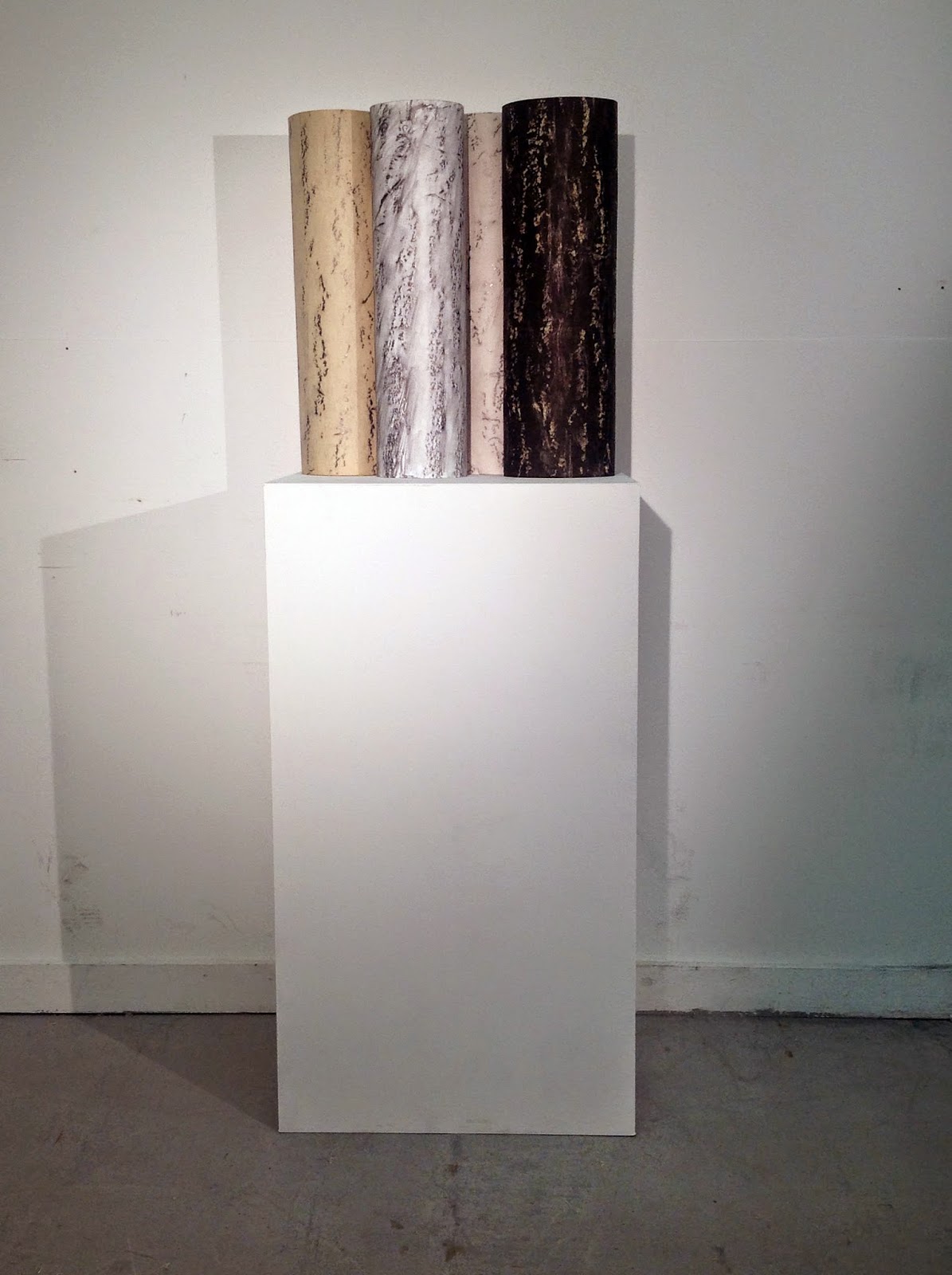The emphasis in relation to this exercise was essentially about form, shape and format, the quality of the photography was not a priority.
There were six frottages in total, taken from two Oak trees and various papers had been used. Five were made using varying thicknesses of lining paper and one was made on Fabriano white 120gsm paper. This created a subtle variant in colour and by placing direct on the floor presented an anti-aesthetic giving a perception of being stored as well as having a direct contact to the ground and the horizontal. I believe the dynamic re storage would change if they were moved away from the wall. Overall, I perceive this as an understated Eastern aesthetic, free of constraints, without status. The shape reflects the vertical of the tree. The presentation could further be extended by varying the shape of the cylinders and experimenting with spacing/grouping. When placed on the table the dynamic changed creating an appearance that was less solid and disconnected.
Enso (Zen Circle) and Calligraphy by Rankeisai, Japanese.
18th century (Edo Period). Hanging scroll, ink on paper
The circular shape also echoes the sign of 'Enso', a concept that is used extensively in Zen Buddhism. It is the idea of the circle or incomplete circle painted in one stroke. This icon is very prevalent in Japan and is meant to resemble enlightenment, strength, elegance of the universe, and the void or the space that connects everything, it can also symbolize the Japanese aesthetic itself. The frottage cylinders can be presented with ends folded in reflecting on the incomplete circle. Here the opening suggest that the enso is not separate, but is part of something greater, or that imperfection is an essential and inherent aspect of existence. It also reflects on the idea of broken symmetry where the principle of controlling the balance of composition through asymmetry and irregularity is an important aspect of the Japanese aesthetic.



These two frottages have been made using heavyweight lining paper. Taken from the same mature oak tree the mark making is strong with good contrast. The numerical reference of the number 2 in Zen Buddhism represents our mundane understanding of reality, as reflected in our focus on duality. There are also "2 Truths", relative truth and absolute truth, the former referring to mundane reality and the latter to transcendental reality. Within Christianity the number 2 is also very significant as with the second creation by God of light - hence dark and light. The second number of anything speaks and implies the differences that exist. Presenting these on the plinth gave a 360 degree access to the viewer and contained them in a small area creating focus closer to eye level.
 |
Close up section of hanging scroll. The left hand image reflects elements of traditional Japanese brush and ink landscapes. These two works present strongest contrast in colour.











No comments:
Post a Comment